Ever since 1900 when it is thought that Mt. Durmitor got its first visitor until 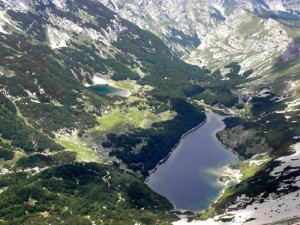 today the region of Durmitor is a must-see place for a great number of nature lovers. The best evidence is that the massif of Durmitor has 2,000 km of marked trails, and 48 peaks which are over 2,000 m high, with five canyons, where the Tara river canyon is the deepest and the most beautiful one in Europe, 18 lakes, the biggest and the most visited is the Crno (Black) lake.
today the region of Durmitor is a must-see place for a great number of nature lovers. The best evidence is that the massif of Durmitor has 2,000 km of marked trails, and 48 peaks which are over 2,000 m high, with five canyons, where the Tara river canyon is the deepest and the most beautiful one in Europe, 18 lakes, the biggest and the most visited is the Crno (Black) lake.
In northwest Montenegro, in the heart of the Durmitor region, located at the foot of the mountain range, the town of Žabljak is at the height of 1,450 metres above the sea level, representing the highest urban settlement in the Balkans. Today Žabljak is economically oriented to tourism and health food production. A new way of thinking, additional incentives, foreign capital investments, and openness to the world are expected to make Žabljak a rather developed tourist centre in European relations. In Žabljak the tourist season lasts for the entire year: winter tourism, spring and autumn (meeting industry, rafting, hunting …), and summer (rest and recreation, sport tourism…).
Active holiday in the mountain
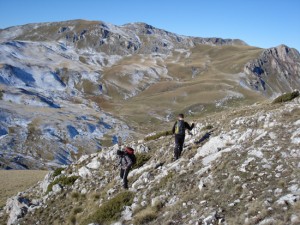 Peaks of Durmitor, each of different shape, deep ravines, naked cliffs, slopes, all are an exceptional challenge offering ideal conditions for mountaineering. Visitors point out that the pleasure of breathing a fresh clear air, enjoyment in the unspoiled nature, and the taste of the icy mountain water, are not to be described in words but experienced first-hand. The highest Durmitor peak Bobotov Kuk, at the height of 2,523 m, together with Bezimeni Vrh (2,487 m) and Đevojka (2,440 m) peaks, composes the highest rock on Durmitor called Soa Nebeska, meaning ‘the sky buttress’.
Peaks of Durmitor, each of different shape, deep ravines, naked cliffs, slopes, all are an exceptional challenge offering ideal conditions for mountaineering. Visitors point out that the pleasure of breathing a fresh clear air, enjoyment in the unspoiled nature, and the taste of the icy mountain water, are not to be described in words but experienced first-hand. The highest Durmitor peak Bobotov Kuk, at the height of 2,523 m, together with Bezimeni Vrh (2,487 m) and Đevojka (2,440 m) peaks, composes the highest rock on Durmitor called Soa Nebeska, meaning ‘the sky buttress’.
What makes this mountain unique is the fact that it is no rare occasion that one can go mountaineering, skiing or swimming in the lake all in one day, in the period from June to September. Active holiday programmes are also very popular. What follows is the presentation of just a few activities for an active holiday offered by Durmitor to its guests, whether it concerns the team building groups or an individual.
Alpine touring is a sport with growing popularity in the world and in Montenegro. Alpine touring is a form of skiing in the wilderness, out of ski tracks. It involves travelling through winter scenery on skis when one is driven by one’s own force, without ski lifts or snowmobile vehicles. Alpine touring is closely related to mountaineering, alpine hiking and skiing, both alpine and Nordic.
One of the most popular extreme sports is surely mountain biking. The  biggest adventure is making a round over the mountain massif Durmitor, also known popularly as the Ring. The tour around Durmitor, which stretches over 86 km, includes the most interesting part – the descent from the mountain and passage through the Sušice canyon. The marathon passes over mountain saddles, through foothills below some of the peaks, and the bicycle riders go down to 600 m above the sea level and then up to 2,100 metres or more. Exceptional terrains and exceptional milieux that one passes through getting acquainted with Durmitor will turn you into a devotee of the sport.
biggest adventure is making a round over the mountain massif Durmitor, also known popularly as the Ring. The tour around Durmitor, which stretches over 86 km, includes the most interesting part – the descent from the mountain and passage through the Sušice canyon. The marathon passes over mountain saddles, through foothills below some of the peaks, and the bicycle riders go down to 600 m above the sea level and then up to 2,100 metres or more. Exceptional terrains and exceptional milieux that one passes through getting acquainted with Durmitor will turn you into a devotee of the sport.
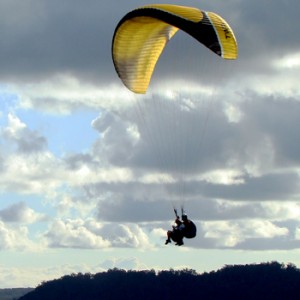 Paragliding is a competitive and recreational sport. The takeoff grounds on Savin kuk is the most convenient point on Durmitor to start gliding, offering perfect conditions for paragliding and a magnificent view. Paragliding camps are organized on Žabljak, and participants all agree that Durmitor has some extraordinary and interesting terrains for this sport, becoming a well known destination for gliders all over the world.
Paragliding is a competitive and recreational sport. The takeoff grounds on Savin kuk is the most convenient point on Durmitor to start gliding, offering perfect conditions for paragliding and a magnificent view. Paragliding camps are organized on Žabljak, and participants all agree that Durmitor has some extraordinary and interesting terrains for this sport, becoming a well known destination for gliders all over the world.
Lakes as hallmarks of Durmitor
The lakes on Mt. Durmitor are a particular hallmark with their clear greenish-bluish hues, their striking beauty, the tranquillity and silence they offer in the surroundings domineered by rocky cliffs, ravines, canyons, meadows and pastures. They make this mountain recognizable at first sight, as one cannot find as many lakes on such a narrow space anywhere else. They are all called Gorske Oči (Highland Eyes), they are all distinguished and diverse as to their origin, size, quantity of water, shape or beauty of nature surrounding them. “Staring at them we measure the depth of our souls”– Jovan Cvijić.
The Black Lake (Crno jezero), the largest and the most famous Durmitor lake, second in size among the mountain lakes in Montenegro and one of the symbols of the region, is located at three kilometres southwest from Žabljak. It is composed of two water bodies, the so-called Small and Big lakes, separated by a narrow strip of land called struga. The lake’s altitude is 1,418 metres, and with its temperature of over 22 degrees in the shade during the summer months the lake is a true paradise for swimmers.
The Devil’s lake (Vražije jezero), better known as the Cradle of winged horses, is at the altitude of 1,411 m, widely open to sun rays. The legend says that a winged horse with red hairs lives there, going out in starry nights to graze or make love to mares who live on the lake’s shores. After completing the passionate act the stallion kicks the inseminated mare in the stomach so that she does not bear offspring. There was one time only that he failed to do it, and the pregnant mare delivered a winged horse Jabučilo, the one that the famous Duke Momčilo took and flew over from Pirlitor to Durmitor in a jiffy.
Then at the distance of 500 m there is the Fish lake (Riblje jezero), named after its abundance in fish, especially the big ones. According to folk tales, the Italian carabineers stationed on Žabljak once caught two trouts which were so big that they stretched from one side of the street to another.
Other lakes are: Pošćensko jezero, Modro jezero, Srablje jezero, Valovito jezero, Veliko škrčko, Malo škrčko, Sušičko jezero, Jablan jezero, Zminje jezero, Barno jezero, Zminičko jezero, Zabojsko jezero, Ševarita lokva, Suva lokva, Zeleni vir.
The last conquered canyon of Europe
Nevidio Canyon is in the central part of Montenegro, on the slopes of Mt. Durmitor. The canyon is about 3 km long, with a great inclination and numerous waterfalls, whirlpools and passages scooped by water. At certain points its precipices get as narrow as half a metre, and their height is almost 400 m.
Remote and hidden in the inaccessible terrain, it caused the attention and curiosity, but there were but a few organized efforts to discover and explore it. The first serious attempts were made in 1957 and 1964, but they were not successful. Then strange and fantastic stories of the last unconquered canyon of Europe started going around, until August 1965, when members of P.S.D. Javorak from Niksic, although with meager equipment, passed the canyon and were the first to introduce to the world the stunning beauty that was hidden for such a long time.
Even today one rarely meets a visitor in the area, as one has to make the greatest efforts at some parts of the canyon in order to surmount water and cliffs and get through the canyon.







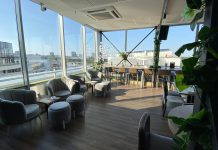













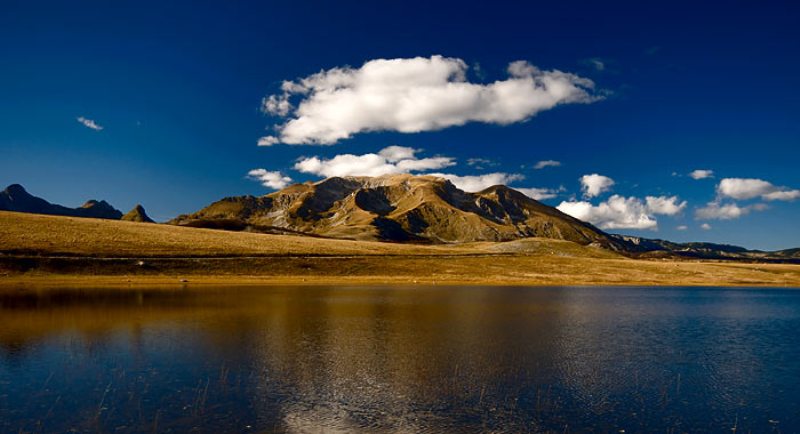

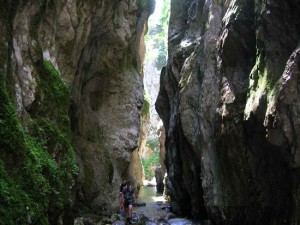

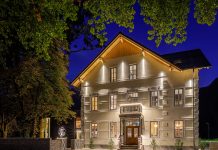














 Srpski
Srpski English
English